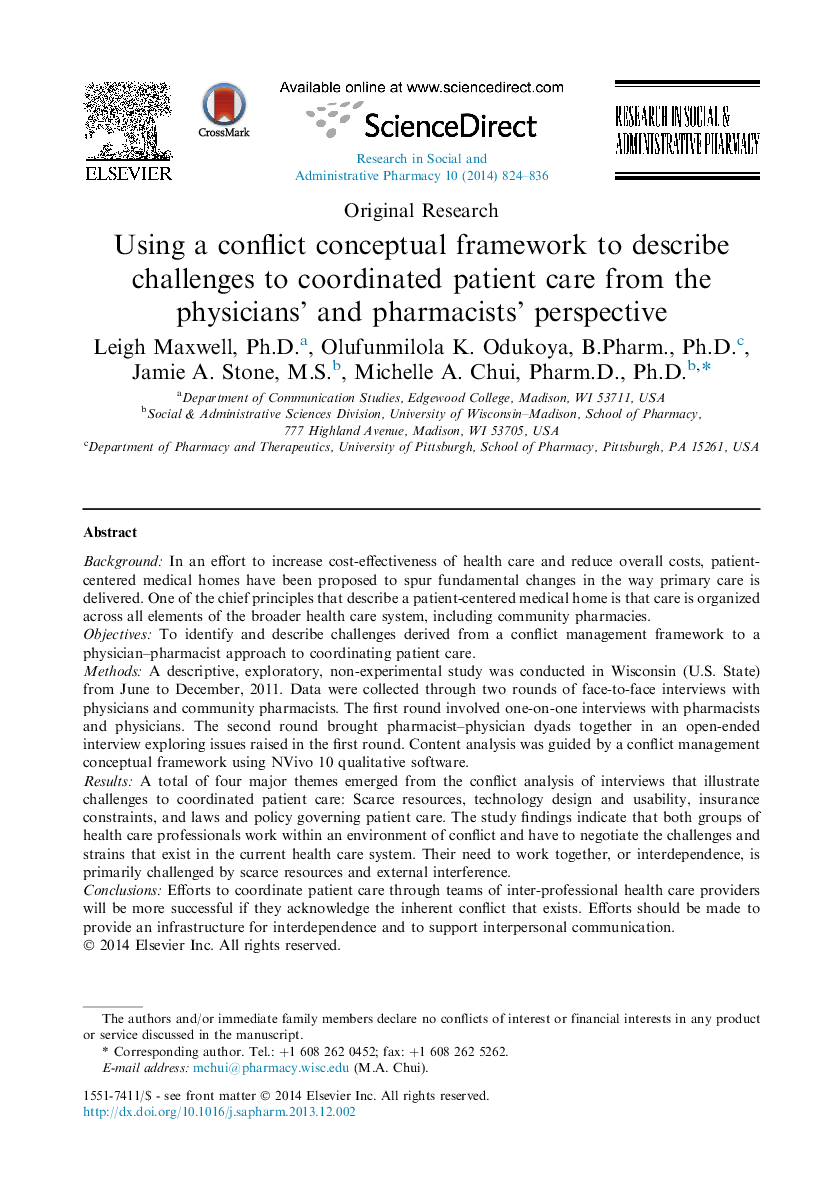| Article ID | Journal | Published Year | Pages | File Type |
|---|---|---|---|---|
| 2508361 | Research in Social and Administrative Pharmacy | 2014 | 13 Pages |
BackgroundIn an effort to increase cost-effectiveness of health care and reduce overall costs, patient-centered medical homes have been proposed to spur fundamental changes in the way primary care is delivered. One of the chief principles that describe a patient-centered medical home is that care is organized across all elements of the broader health care system, including community pharmacies.ObjectivesTo identify and describe challenges derived from a conflict management framework to a physician–pharmacist approach to coordinating patient care.MethodsA descriptive, exploratory, non-experimental study was conducted in Wisconsin (U.S. State) from June to December, 2011. Data were collected through two rounds of face-to-face interviews with physicians and community pharmacists. The first round involved one-on-one interviews with pharmacists and physicians. The second round brought pharmacist–physician dyads together in an open-ended interview exploring issues raised in the first round. Content analysis was guided by a conflict management conceptual framework using NVivo 10 qualitative software.ResultsA total of four major themes emerged from the conflict analysis of interviews that illustrate challenges to coordinated patient care: Scarce resources, technology design and usability, insurance constraints, and laws and policy governing patient care. The study findings indicate that both groups of health care professionals work within an environment of conflict and have to negotiate the challenges and strains that exist in the current health care system. Their need to work together, or interdependence, is primarily challenged by scarce resources and external interference.ConclusionsEfforts to coordinate patient care through teams of inter-professional health care providers will be more successful if they acknowledge the inherent conflict that exists. Efforts should be made to provide an infrastructure for interdependence and to support interpersonal communication.
